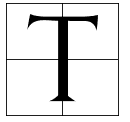Member-only story
The Plot to Kill Parliament in 1820
When a group of radicals sought to initiate a revolution in Britain
 The early 19th century, in England, saw massive levels of unrest. Riots broke out throughout the country, and public dissatisfaction with the government rose. Due to a number of factors, such as the Post-Napoleonic Depression, poor crop harvests, and the Peterloo Massacre, which left historians such as Eric J. Evans suggesting that these factors made the period turbulent and ripe for revolution (Evans, The Great Reform Act of 1832, 1994, p. 54).
The early 19th century, in England, saw massive levels of unrest. Riots broke out throughout the country, and public dissatisfaction with the government rose. Due to a number of factors, such as the Post-Napoleonic Depression, poor crop harvests, and the Peterloo Massacre, which left historians such as Eric J. Evans suggesting that these factors made the period turbulent and ripe for revolution (Evans, The Great Reform Act of 1832, 1994, p. 54).
The anger and frustration against the government and their dealings with public dissatisfaction culminated in a cataclysmic plot to kill all cabinet ministers, including the Prime Minister, Lord Liverpool, in 1820. The event became known as the Cato Street Conspiracy.
Who were the conspirators?
The group was known as the Spencean Philanthropists, naming themselves after the British radical thinker and speaker, Thomas Spence. The Spencean Philanthropists were known to the authorities as a revolutionary group who issued propaganda and sought to overthrow the government. Only twenty-seven people agreed to partake in the assassination plot, and these key figures included Arthur Thistlewood, an active radical who had travelled to France and…
